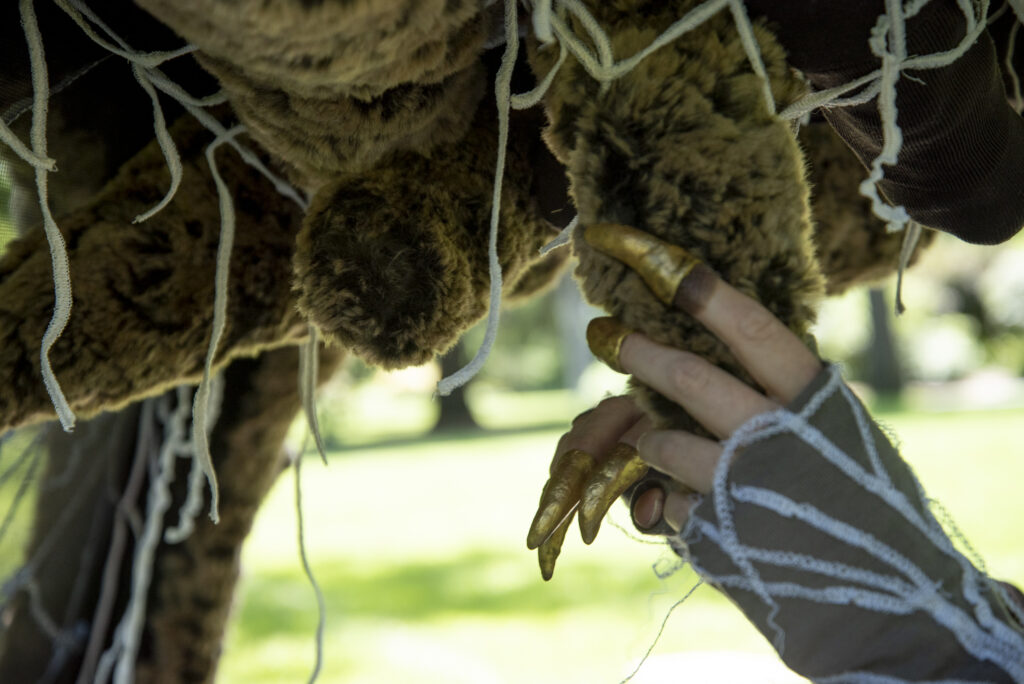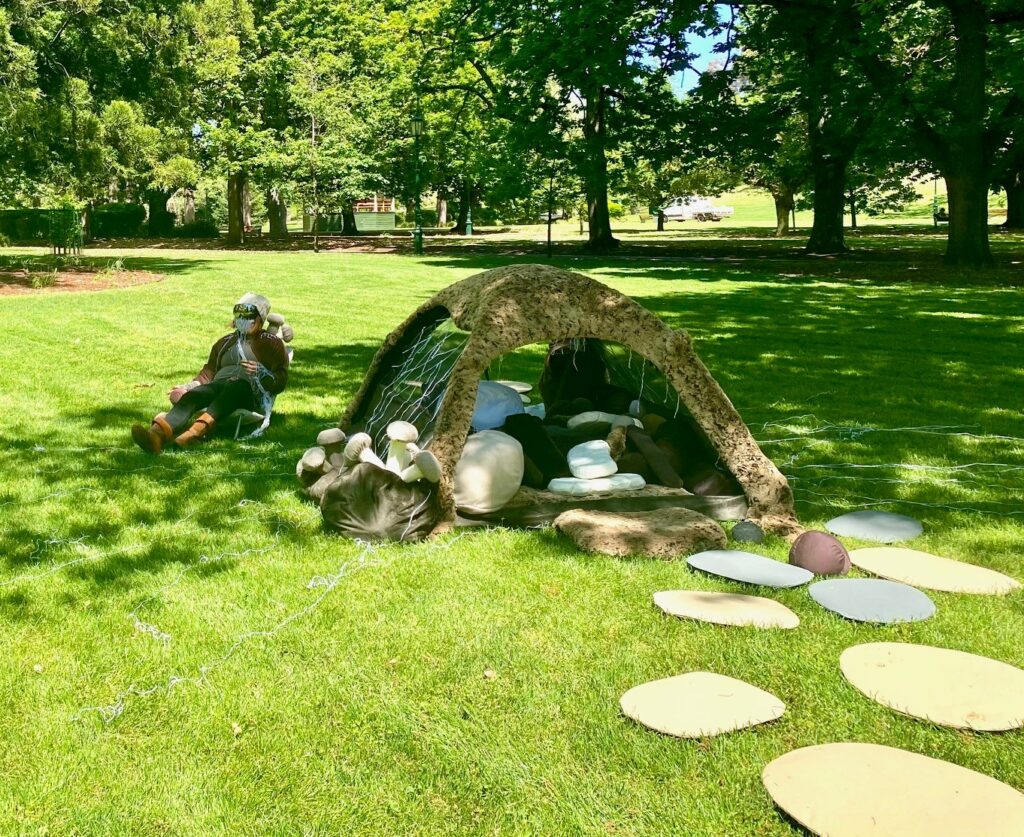CiPi (artist identity) is the ultimate creative slashy – artist/Masters student/small business operator/sewer/maker and now visual arts technician. Oh, and mother to two teenage boys. This is very common in the culture and creative sector, where many work on short-term contract basis, going from gig to gig and juggling multiple revenue streams to maintain their family life, career and creative aspirations.
CiPi has been studying her Masters in Visual Art Research at the Bendigo campus of Latrobe University. Creative Bendigo met CiPi when she applied for and was successful in receiving a grant from the Creative Recovery Activation Fund in 2021 as part of the pandemic recovery support from the City of Greater Bendigo.
CiPi has been making art and textiles for 30 years. Through textiles, costume, fictitious entities and a sense of curiosity, She has been researching ways we can think and act with more care and responsibility to our earth and each other.
“I love learning new things and come up with odd little stories and characters that I’m not sure anyone else actually gets, but I like making them anyway. We don’t all have to see everything the same way”.

One such character is Mycelium Sprite, who CiPi created as a response to the Creative Recovery Activation Grant. The Mycelium Sprite zips around under the earth, connecting and listening to the communication between the trees. The whispers have become shouts. The Mycelium Sprite can feel pain and euphoria, she is of rot and renewal, and of sustenance, sharing, caring, looking out for new life, supporting it. She can also bring about death and decay, a change that allows for new life, new directions.
But on the days she popped up in Bendigo’s Rosalind Park in November 2021, she was pretty quiet, emerging out of the ground momentarily to make a few people curious. The Mycelium Sprite encourages us to think about the soil under our feet, how it sustains us and is vital to our existence. Her message is, “do not treat the soil like dirt”.
CiPi handmade the elements of her soft sculpture performative space, including the costume for Mycelium Sprite and her underground earthy palace; containing soil particles; mushrooms; bacteria; mycelium tendrils; worms and all manner of objects that create a healthy soil ecosystem. Sparking lots of curious looks and even conversation amongst the more inquisitive, visitors and park regulars were jolted out of their everyday experiences to stop and wonder.

Activations in public spaces are often about creating dynamic and safe spaces for people to witness the unusual, encourage curiosity and communicate ideas in strange and innovative ways. For the artist CiPi, it was an opportunity to test out her creative ideas in a safe and supported way. Artists and creatives thrive on exhibiting or sharing their work, which is not always about having it available for sale. The Creative Recovery Activation Fund program recognises the value of creative production, the time it takes to develop new ideas and the expertise and skills that are required. Creative Bendigo asked CiPi a few questions about her creative practice and working in a creative community.

What inspires your creative practice?
Twenty years ago I was told about a man who wandered around New York City in the 1970’s creating tiny cities in gutters and cracks in the walls. Eventually I found out that he was the artist, Charles Simonds. He would ride out on his bicycle to collect the clay from clay pits outside the city. He would work alone or with passers by to create the ruins of the cities of the “Little People” who were always on the move, leaving their remnant buildings behind.
I love the expression of his ideas in the materials and use of public spaces, working into cracks and on window sills. Creating stories and objects for people to wonder about.
A massive material inspiration is fibre of all kinds. I love to find it, use it, make it, change it. Colour is also a huge inspiration. Colour makes my heart sing.
What do you enjoy about being a creative?
Having the creative tools at my fingertips to respond in my own way to beauty, an interesting thought or being able to find a way though hard times.
“I feel I have a superpower in creativity”
Is there anything that you think could help support creative practice in and around the Greater Bendigo region?
Creatives need places to create and show their work in public. Showing work is a cauldron that makes you see your work differently and helps you grow. These places need to be low or no cost. There is so much space out there that could be made available, but it takes the clout of organisations to make that happen.
0 Comments on "Activating healthy soil"